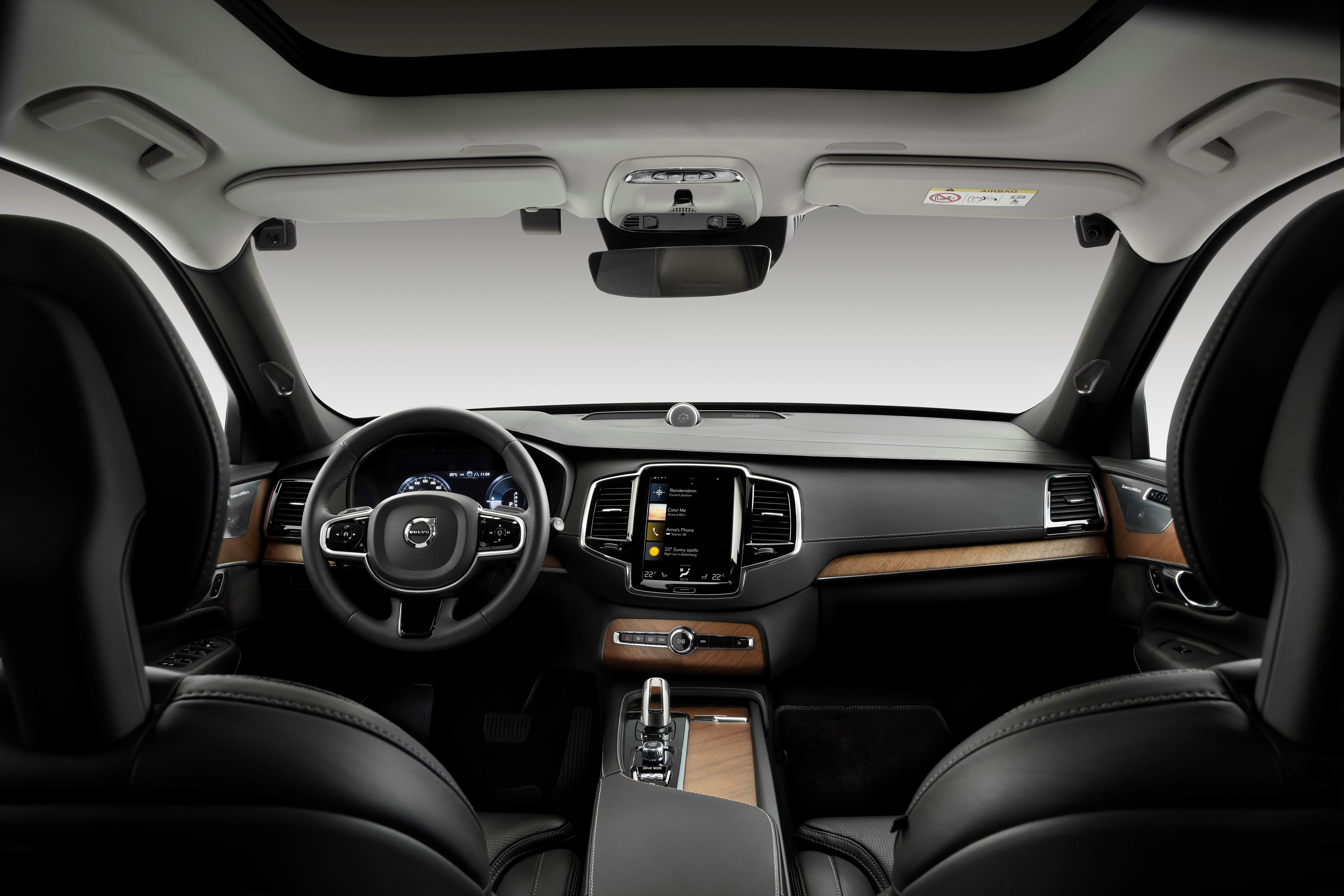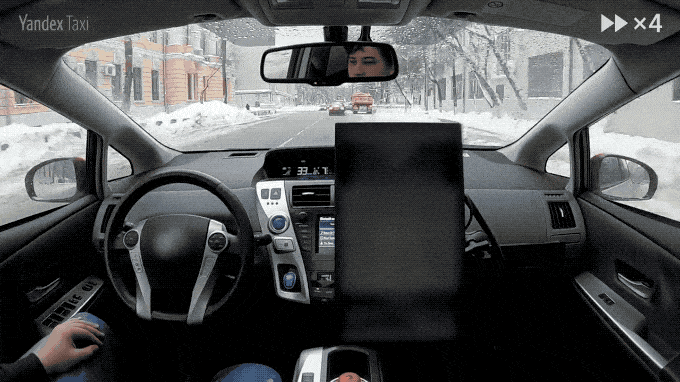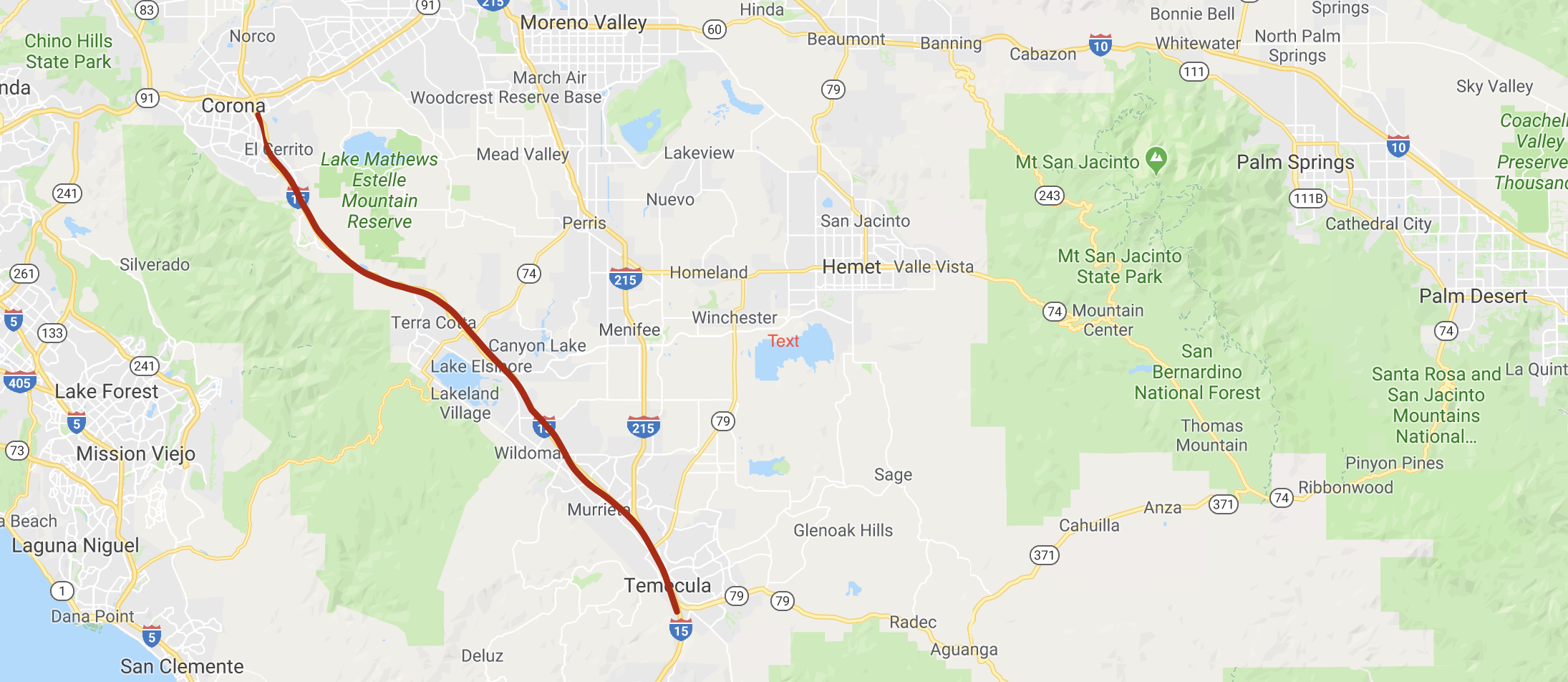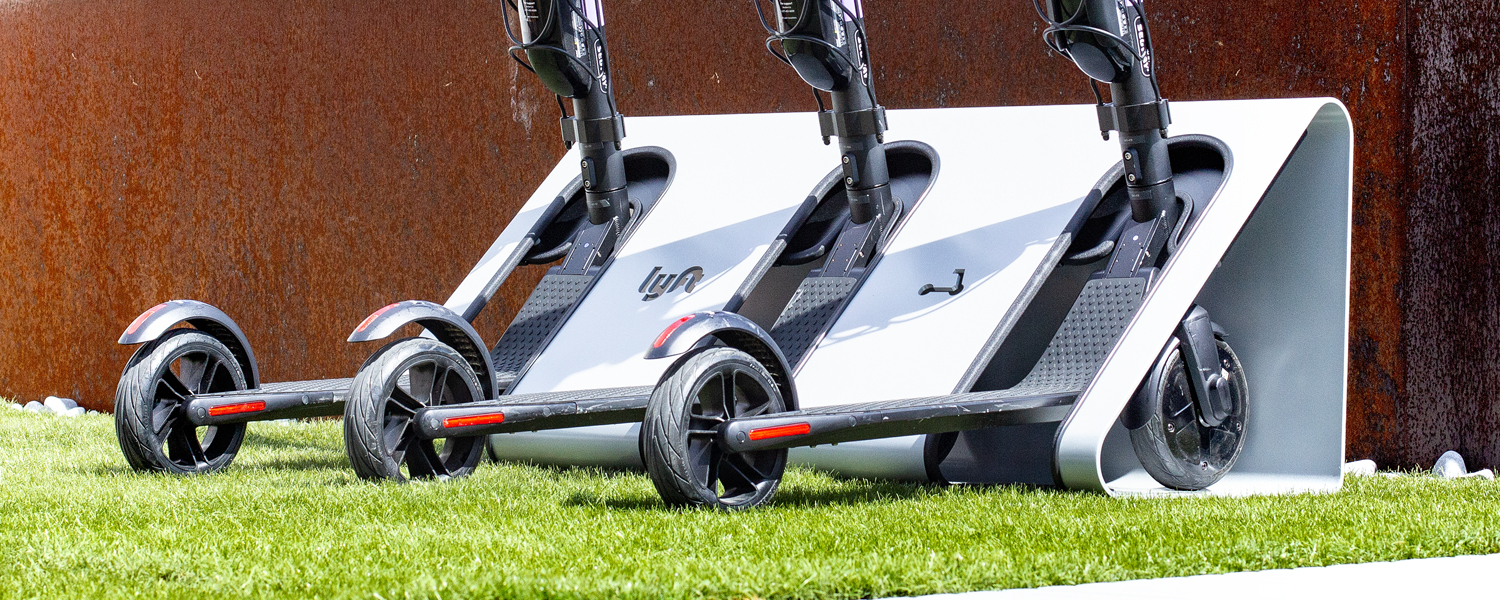Transportation weekly: Nuro dreams of autonomous lattes, what is a metamaterial, Volvo takes the wheel
Welcome back to Transportation Weekly; I’m your host Kirsten Korosec, senior transportation reporter at TechCrunch. We love the reader feedback. Keep it coming.
Never heard of TechCrunch’s Transportation Weekly? Read the first edition here. As I’ve written before, consider this a soft launch. Follow me on Twitter @kirstenkorosec to ensure you see it each week. An email subscription is coming!
This week, we’re shoving as much transportation news, tidbits and insights in here as possible in hopes that it will satiate you through the end of the month. That’s right, TechCrunch’s mobility team is on vacation next week.
You can expect to learn about metamaterials, how traffic is creating genetic peril, the rise of scooter docks in a dockless world, new details on autonomous delivery startup Nuro and a look back at the first self-driving car fatality.
ONM …
There are OEMs in the automotive world. And here, (wait for it) there are ONMs — original news manufacturers. (Cymbal clash!) This is where investigative reporting, enterprise pieces and analysis on transportation lives.
Mark Harris is here again with an insider look into autonomous vehicle delivery bot startup Nuro. The 3-year-old company recently announced that it raised $940 million in financing from the SoftBank Vision Fund.
Harris, during his typical gumshoeing, uncovers what Nuro might do with all that capital. It’s more than just “scaling up” and “hiring talent” — the go-to declarations from startups flush with venture funding. No, Nuro’s founders have some grand ideas from automated kitchens and autonomous latte delivery to smaller robots that can cross lawns or climb stairs to drop off packages. Nuro recently told the National Highway Traffic Safety Administration that it wants introduce up to 5,000 upgraded vehicles called the R2X, over the next two years.
The company’s origin story and how it’s tied to autonomous trucking startup Ike is just as notable as its “big ideas.”
Come for the autonomous lattes; stay for the story … How Nuro plans to spend Softbank’s money
Dig In
What do metamaterials and Volvo have in common? Absolutely nothing. Except they’re both worth higlighting this week.
First up, is an article by TechCrunch’s Devin Coldewey on a company called Lumotive that has backing from Bill Gates and Intellectual Ventures. The names Bill Gates and Intellectual Ventures aren’t the most interesting components of the story. Nope, it’s metamaterials.
Let us explain. Most autonomous vehicles, robots and drones use lidar (or light detection and ranging radar) to sense their surroundings. Lidar basically works by bouncing light off the environment and measuring how and when it returns; in short, lidar helps create a 3D map of the world. (Here’s a complete primer on WTF is Lidar).
However, there are limitations to lidar sensors, which rely on mechanical platforms to move the laser emitter or mirror. That’s where metamaterials come in. In simple terms, metamaterials are specially engineered surfaces that have embedded microscopic structures and work as a single device. Metamaterials remove the mechanical piece of the problem, and allow lidar to scan when and where it wants within its field of view.
Metamaterials delivers the whole package: they’re durable and compact, solve problems with existing lidar systems, and are not prohibitively expensive.
If they’re so great why isn’t everyone using them? For one, it’s a new and emerging technology. Lumotive’s product is just a prototype. And Intellectual Ventures (IV) holds the patents for known techniques, Coldewey recently explained to me. IV is granting Lumotive an exclusive license to the tech — something it has done with other metamaterial-based startups it has spun out.
Shifting gears to Volvo
Automakers are rolling out increasingly robust advanced driver assistance systems in production cars. These new levels of automation are creating a conflict of sorts. One on hand, features like adaptive cruise control and lane steering can make commutes less stressful and arguably safer. And yet, they can also cause overconfidence in the system and complacency among drivers. (Even Tesla CEO Elon Musk has noted that complacency is a problem among owners using its advanced ADAS feature called Autopilot). (And yes, I wrote advanced ADAS; it sounds repetitive, but it’s meant to express higher levels of automation and a term I recently encountered from two respected sources)
Some argue that automakers shouldn’t deploy these kinds of automated features unless vehicles are equipped with driver-monitoring systems (DMS are essentially an in-car camera and accompanying software) that can ensure drivers are paying attention. Volvo is taking that a step further.
The company announced this week that it will integrate DMS into its next-gen, SPA2-based vehicles beginning in the early 2020s and more importantly, enable its system to take action if the driver is distracted or intoxicated. The camera and other sensors will monitor the driver and will intervene if a clearly intoxicated or distracted driver does not respond to warning signals and is risking an accident involving serious injury or death. Under this scenario, Volvo could limit the car’s speed, call the Volvo on Call service on behalf of the driver or cause the vehicle to slow down and park itself on the roadside.
Volvo’s plans raise all kinds of questions, including privacy concerns and liability. The intent is to add a layer of safety. But it also adds complexity, which could compromise Volvo’s mission. The Autonocast, a podcast I co-host with Alex Roy and Ed Niedermeyer, talk about Volvo’s plans in our latest episode. Check it out.
A little bird …
We hear a lot. But we’re not selfish. Let’s share.
Remember two weeks ago when we dug into Waymo’s laser bears and wondered whether we had reached “peak” LiDAR? (Last year, there were 28 VC deals in LiDAR technology valued at $650 million. The number of deals was slightly lower than in 2017, but the values jumped by nearly 34 percent.)
It doesn’t look like we have. We’re hearing about several funding deals in the works or recently closed, a revelation that shows investors still see opportunity in startups trying to bring the next generation of light ranging and detection sensors to market.
Spotted …. Former Zoox CEO and co-founder Tim Kentley Clay was spotted at the Self-Racing Car event at Thunderhill Raceway near Willows, Calif., this weekend.
Got a tip or overheard something in the world of transportation? Email me or send a direct message to @kirstenkorosec.
Deal of the week
Lyft set the terms for its highly-anticipated initial public offering and announced it will kick off the roadshow for its IPO. That means the initial public offering will likely occur in the next two weeks. Here’s the S-1 that Lyft filed in early March. This latest announcement also revealed new details, including that its ticker symbol will be “LYFT” — as one might expect — and that the IPO range is set for between $62 and $68 per share to sell 30,770,000 shares of Class A common stock. Lyft could raise up to $2.1 billion at the higher end of that range, or $1.9 billion at the lower end.
The Lyft news was big — and it’s a story we’ll be following for awhile. However, we wanted to highlight another one of Ingrid Lunden’s articles because it underscores a point I’ve been pushing for awhile: not every important move in the world of autonomous vehicles occurs in the big three of Detroit, Pittsburgh and Silicon Valley.
This week, Yandex, the Russian search giant that has been working on self-driving car technology, inked a partnership with Hyundai to develop software and hardware for autonomous car systems. This is Yandex’s first partnership with an OEM. But it’s not Hyundai’s first collaboration with an autonomous vehicle startup. (Hyundai has a partnership with Aurora too)
Yandex will work with Hyundai Mobis, the car giant’s OEM parts and service division, “to create a self-driving platform that can be used by any car manufacturer or taxi fleet” that will cover both a prototype as well as parts for other car-makers.
Other deals:
- Indonesia’s Kargo comes out of stealth with $7.6 million from Travis Kalanick, Sequoia and others
- Ford to invest $850 million to add more production capacity for EVs
- Toyota is deepening its relationship with Nvidia
- GM is investing $300 million to build its next EV in Michigan
Snapshot
One year ago, I parked on a small rise overlooking Mill Avenue in Tempe, Arizona. The mostly dirt knoll, dotted with some trees and a handful of structures known out here as ramadas, was hardly remarkable. Just one other car sat in the disintegrating asphalt parking lot, the result of so many sun-baked days. A group of homeless people had set up at the picnic tables under a few of the structures, their dogs lolling nearby.
And yet, it was here, or specifically on the gleaming road below, that something extraordinary had indeed happened. Just days before, Elaine Herzberg was crossing Mill Avenue south of Curry Road when an Uber self-driving vehicle struck and killed her. The vehicle was in autonomous mode at the time of the collision, with a human test driver behind the wheel.
I had been in the Phoenix area, a hub for testing autonomous vehicle technology, to moderate a panel on that very subject. But the panel had been hastily canceled by organizers worried about the optics of such a discussion. And so I picked up Starsky Robotics CEO Stefan Seltz Axmacher who was also in town for this now-canceled panel, and we drove to site where Herzberg had died.
I wrote at the time, that “March 18 changed everything—and nothing—in the frenzied and nascent world of autonomous vehicles.” One year later, those words are still correct. The incident dumped a bucket of ice water over the figurative heads of autonomous vehicle developers. Everyone it seemed, had sobered up. Testing was paused, dozens of companies assessed their own safety protocols. Earnest blogs were written. Lawsuits were filed.
And yet, the cogs on the AV machine haven’t stopped turning. That’s not necessarily a bad thing. Innovation can sometimes “make the world a better place.” But it’s rarely delivered in a neat little package, no strings attached.
I’m hardly the first to reflect or write about this one-year anniversary. There are many takes, some of them hot, others not so much. And there are a few insightful ones; Autonocast co-host Niedermeyer has one entitled 10 Lessons from Uber’s Fatal Self-Driving Car Crash that’s worth reading.
Right now, I’m more interested in those lessons that haven’t been learned yet. It’s partly what prompted us to launch this newsletter, a weekly post that aims to be more than a historical record or a medium to evangelize AV technology.
Tiny but mighty micromobility
It’s been said before, but we’ll say it again. Data is queen. This past week, mobility management startup Passport partnered with Charlotte, N.C., Detroit, Mich. and Omaha, Neb. and Lime to create a framework to apply parking principles, data analysis and more to the plethora of shared micromobility services.
And, in case you missed it, Bird had to let some people go late last week. We’ve learned a few more details since the news broke. That came out to about 40 people out of the ~900-person company. The layoffs were part of Bird’s annual performance review process and only affected U.S.-based employees, TechCrunch learned. Those laid off are eligible for severance, including health and medical benefits. Despite the layoffs, Bird is actively looking to hire for more than 100 positions throughout the company.
Meanwhile, Ford-owned Spin partnered with mobility startup Zagster to deploy scooters in 100+ new cities and campuses by the end of this year.
— Megan Rose Dickey
Traffic affects more than people. Take a look at the map pictured above. See the red line? That’s Interstate 15 in southern California. To the east, are inland communities and eventually the San Bernardino National Forest and San Jacinto Mountains.
To the west, are the Santa Ana Mountains and an increasingly isolated family of 20 cougars, the Los Angeles Times reports this week. The 15 and the heavy traffic on it is putting pressure on the gene pool. In the past 15 years, at least seven cougars have crossed the 15. Just one sired 11 kittens. This lack of genetic diversity — the lower documented for the species outside of the endangered Florida panther — could have devastating effects on mountain lions here. A study published in the journal Ecological Applications predicts extinction probabilities of 16 percent to 28 percent over the next 50 years for these lions.
In this specific case, the last natural wildlife corridor in the area — and perhaps the difference between survival and extinction — is little Temecula Creek.
This phenomenon is happening in other areas as well, causing communities to toy with possible solutions. One option: shuttling the lions over the other side, a move that could cause all sorts of problems. In other places, such as an area near the Santa Monica Mountains, a wildlife overpass has been proposed.
Transit pain points
Meanwhile, digital and mobile ticketing and payment company CellPoint Mobile released a report this week that examines the rising cost of acquiring new riders, mobile technology limitations and outdated procurement processes. The titillatingly named report — Challenges Facing Municipal, Regional and National Transit Agencies in the United States — surveyed 103 ground and mass transit operators in the United States.
Some takeaways and key findings:
- 30 percent of mass transit providers collect fares through a mobile app; only 39 percent have an app at all
- 26 percent of transit operators say costs are their biggest challenges. Among metro mass transit agencies, that concern jumps to 40 percent
- Nearly a quarter (23 percent) of national operators and 24 percent of large transit agencies (1,000 to 10,000 employees) say that implementing mobile technology is their single biggest challenge.
- Customer acquisition is the second-most common challenge in US transportation, cited by 23 percent national, 33 percent regional, and 17 percent of private operators.
Other items of note:
- The Information’s Amir Efrati has yet another piece on Alphabet’s self-driving car business Waymo. This time Efrati analyzed confidential Waymo customer feedback on 2,500 rides this quarter. The upshot: autonomous ride-hailing services face considerable headwinds in their attempt to replicate Uber and Lyft.
- The New York Times magazine takes a trip across the U.S. in an Amtrak
- Google released a report on how design can improve trust in autonomous vehicles
Testing and deployments
Dockless scooters have been all the rage; now it seems that cities and scooters startups are considering whether free-floating micromobility might need to be reined in a skosh.
Lyft, which has scooters in 13 cities, recently experimented with parking racks. These parking racks or docks are designed specifically for scooters. The company set up these docking stations in Austin during SXSW and released a handy Guide to Good Scootiquette to encourage better and safer rider behavior.
Meanwhile, an industry around scooter management is emerging. Swiftmile, a startup that developed light electric vehicle charging systems for bike share, has new solar-powered charging platforms for scooters. TechCrunch met Swiftmile CEO Colin Roche in Austin earlier this month and learned that a number of cities are interested in deploying these systems. Swiftmile’s system not only charges the scooters, it also can provide scooter companies with diagnostics and keep the device locked in the dock if it’s malfunctioning. The docks can be programmed to lock the scooters up during certain hours — bar closing time would seem like an optimal time — to keep them from being misused. Systems like these could help scooter companies like Bird and Lime extend the life of their scooters and keep local officials happy.
Autonomous street sweepers
ENWAY and Nanyang Technological University are deploying autonomous street sweepers in the inner city of Singapore as part of a project with National Environmental Agency Singapore. The project began this month and will run into September 2020.
Under the pilot, ENWAY’s autonomous sweeper will clean an area of more than 12 kilometers of roads every day. The sweeper is equipped with numerous sensors, including 2D and 3D lidars, 3D cameras, GNSS. The base vehicle is a retrofitted all-electric compact road sweeper from Swiss manufacturer Bucher Municipal.
The company aims to commercialize autonomous cleaning on public ground in Singapore and abroad.
A demo of the sweeper is in the video below.
Silvercar scales up
On the other end of the transportation spectrum, Silvercar by Audi has rolled out a delivery and pick up service in downtown locations in New York and San Francisco. Silvercar customers can request their rental be dropped off and picked up at home or a location of their choosing for an additional fee. Silvercar also announced plans to bring its premium rental experience to Boston at Logan International Airport on April 15.
If you’ve never heard of Silvercar, you’re forgiven. It’s not exactly widespread. The company aims to remove the headache of traditional car rental. I recently tried it out in Austin during SXSW and found that it is convenient, and works pretty well, but doesn’t remove some of the annoying pinch points of car rentals. Yes, there are no lines. When I got off the plane in Austin, I received a message that my car was ready and to hail my driver who picked me up curbside, drove me to the Silvercar operation, and brought me to my Audi. I used the app to unlock the vehicle.
That’s cool. What would be even better is skipping all those steps and being able to access the vehicle right there in the airport without interacting with anyone. (Granted, not everyone wants that) This new delivery and pickup service in New York and San Francisco gets closer to that sweet spot.
Other stuff:
On our radar
New York Auto Show is coming up and I’ll be in the city right before the show. But then it’s back to the west coast for TC Sessions: Robotics + AI, a one-day event held April 18 at UC Berkeley. I’ll be interviewing Anthony Levandowski on stage and moderating a panel with Aurora co-founder Sterling Anderson and Uber ATG Toronto chief Raquel Urtasun to talk about building the self-driving stack and how AI is used to help vehicles understand and predict what’s happening in the world around them and make the right decisions.
Also, the PAVE Coalition is hosting its first public demonstration event April 5-7 at the Cobo Center in downtown Detroit. The public will have an opportunity to ride in a self-driving car, and interactive displays will help visitors understand the technology behind self-driving cars and their potential benefits.
Finally, one electric vehicle thing we’ve been following. Columbus, Ohio won the U.S. Department of Transportation’s first-ever Smart City Challenge and we’ve been tracking the city’s progress and its efforts to increase electric vehicle adoption.
One of the organizers told TechCrunch that since the beginning of 2017, the cumulative new EV registrations in the Columbus metropolitan area have increased by 121 percent. New EV registrations over this period outpaced the 82 percent expansion in the Midwest region and the 94 percent growth seen across the U.S. over the same time period.
Thanks for reading. There might be content you like or something you hate. Feel free to reach out to me at kirsten.korosec@techcrunch.com to share those thoughts, opinions or tips.
Nos vemos en dos semanas.
from TechCrunch https://ift.tt/2TTx95f










No comments
Post a Comment